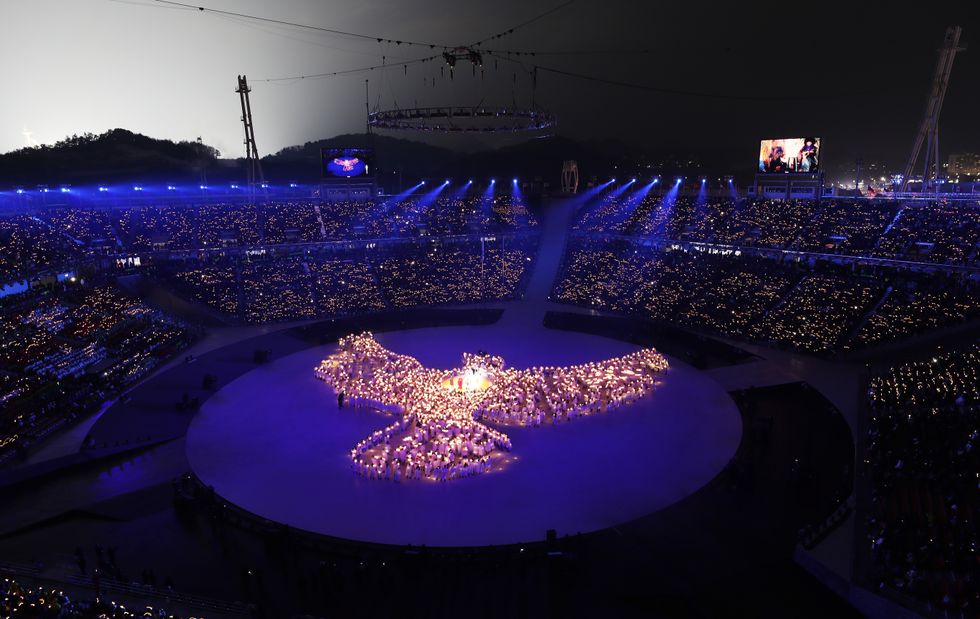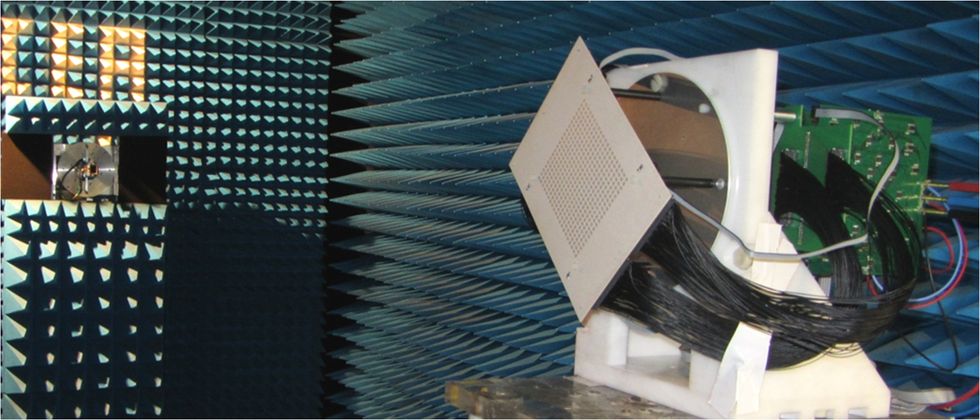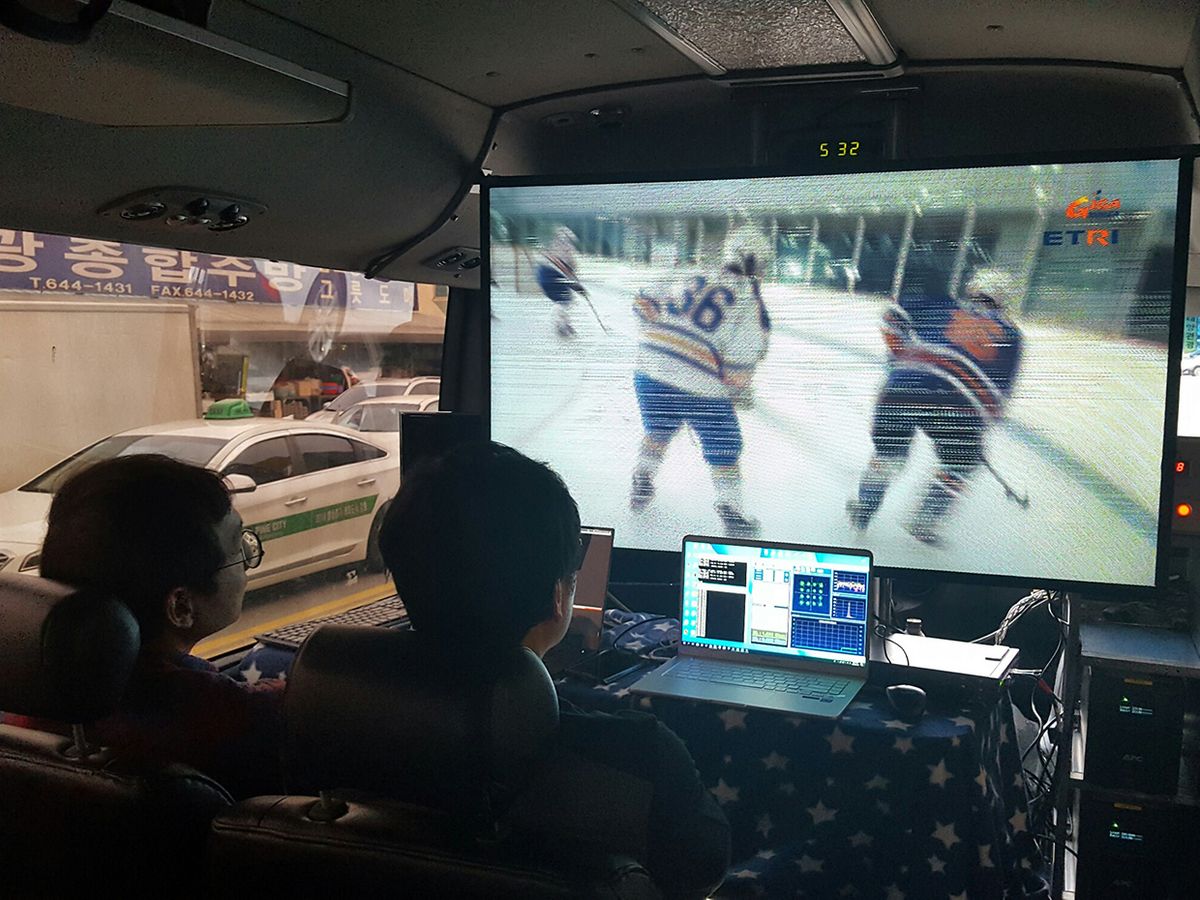Olympics fans arriving at South Korea’s Gangneung Station on their way to the coastal ice arenas this week are getting a sneak peek at 5G Champion, a pioneering mobile-broadband project two years in the making. This joint EU-Korea venture—led by France’s CEA-Leti and South Korea’s Electronics and Telecommunications Research Institute—stands out as a quiet contender in what the Games’ official telecommunications sponsor, KT Corp., has dubbed the “first 5G Olympics.”
Much ado has been made of KT’s own widely-publicized demos, and in pizazz, they did not disappoint. After deploying its 5G trial network at the opening ceremony on Feb. 9 to synchronize in real time 1,200 flickering LED candles forming a giant dove, KT continues to dazzle spectators with display tablets and virtual-reality glasses live-streaming its vision for a 5G future: immersive footage from ski courses and bobsleigh cockpits; 360-degree close-ups of speed skaters and ice dancers; VR trips to hockey games and snowboarding runs.

Like these trial services and others popping up around the globe, 5G Champion (of which KT is one of 21 industry partners) makes use of the plethora of spectrum available in millimeter-wave frequencies to boost data rates and lower latency. 5G Champion’s prototype radios, for instance, operate in a 1-Gigahertz-wide band around 28 Gigahertz—10 times the maximum spectrum available to today’s 4G networks.
This extra bandwidth—along with speedier communication protocols and a more versatile transmission scheme known as massive MIMO—allows the project’s test network in Gangneung to feed interactive maps and pre-recorded sports videos to a demo bus at a whopping 5 gigabits per second with only 2 milliseconds of latency. (Compare that to 4G’s 150-mbps average mobile data rates and 10-ms latencies.) “We don’t have the rights to show live Olympics content, but the tech is the same,” says Emilio Calvanese Strinati, 5G Champion’s European coordinator at CEA-Leti.
And the project offers something more: Visitors to its exhibition booth near Gangneung Station can interact with a second 5G radio testbed in Oulu, Finland through a 14,000-kilometer-long fiber core. They can take a virtual live tour of the community center housing the testbed, for example, or actuate remote sensors to check Oulu’s snow depth and the brightness of the aurora borealis. Users in Oulu, meanwhile, can take a look around Gangneung.
This cross-continental 5G link is unique to 5G Champion. “There’s nobody else at the moment who’s trialing this,” Calvanese Strinati says. To implement it, his team engineered an entirely new network architecture. At its heart is an increasingly popular framework known as network functions virtualization management and orchestration (NFV MANO), which runs basic data-routing tasks in software rather than on dedicated hardware, as is typical in 4G backbones.

This virtualization allows 5G Champion to push certain tasks to the edges of its network in Oulu and Gangneung, where the data will be used. As a result, the network is able to maintain a steady packet flow, thereby avoiding choppy streams. It can also be easily reconfigured to suit many different uses—a feature that anticipates the Internet of Things. “We can select the requirements we want—maybe it’s a high data rate, or maybe it’s very low latency or very low power—and move the functions we need to where we need them,” Calvanese Strinati says.
At a 5G symposium this Friday in Seoul, 5G Champion will conclude its Pyeongchang debut by testing a new modulation scheme for 5G satellite coverage called Block Filtered-OFDM. Using a channel emulator to mimic a satellite link, the demo is intended to showcase BF-OFDM’s advantages, including better user tracking and more efficient use of spectrum resources.
That, however, won’t be the project’s capstone. Next week, Calvanese Strinati and his team will return to France, where they will begin preparations for an even bigger show: the 2020 Summer Games in Tokyo.



